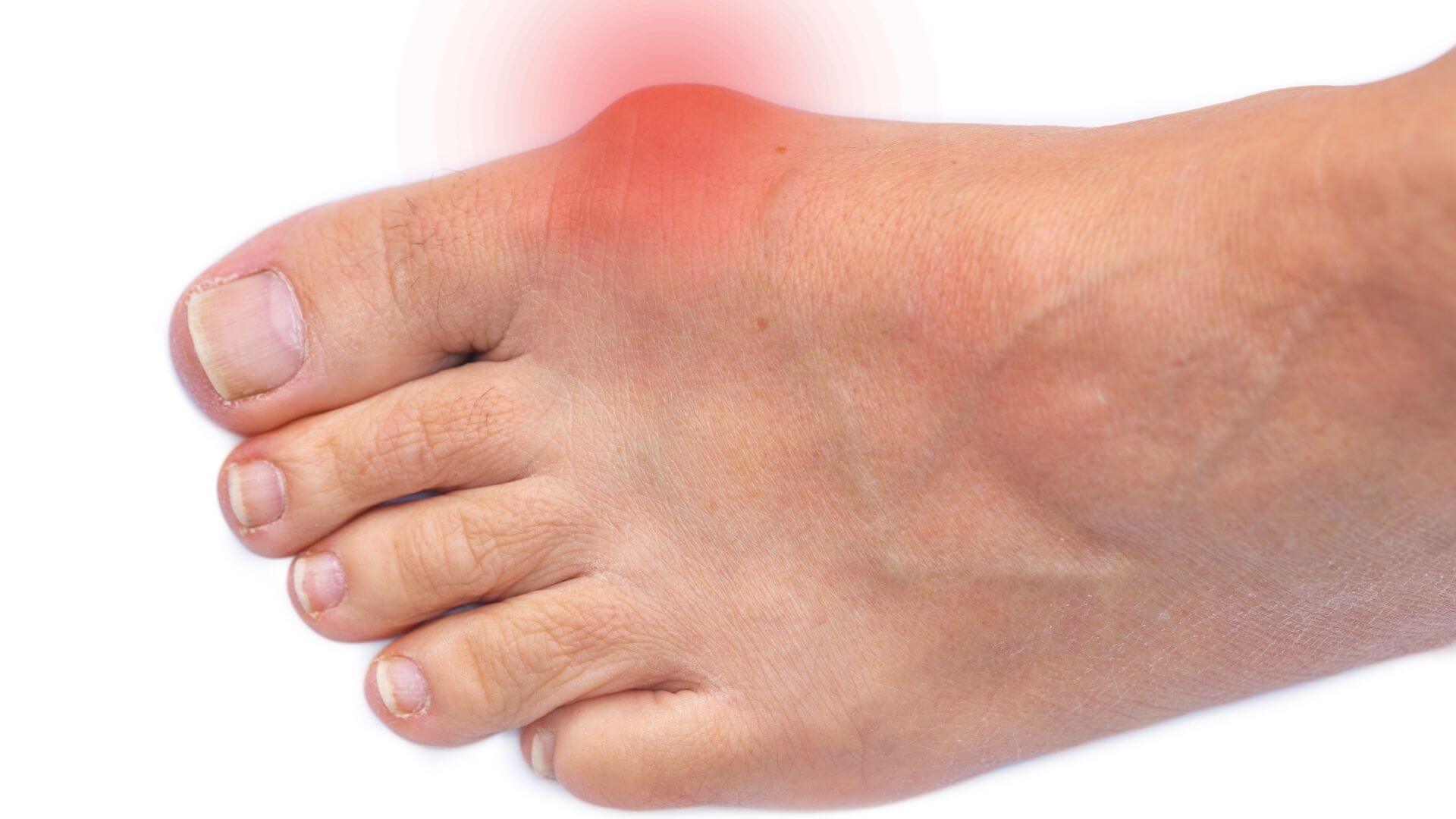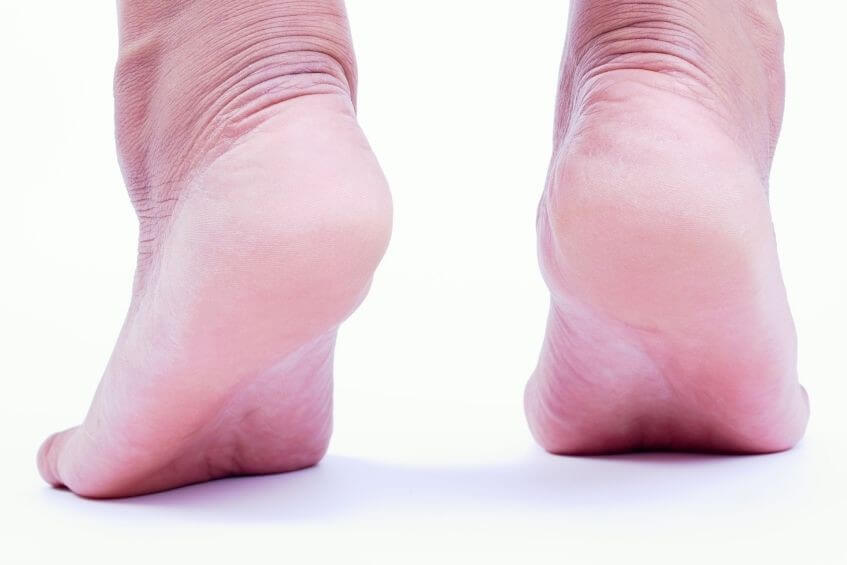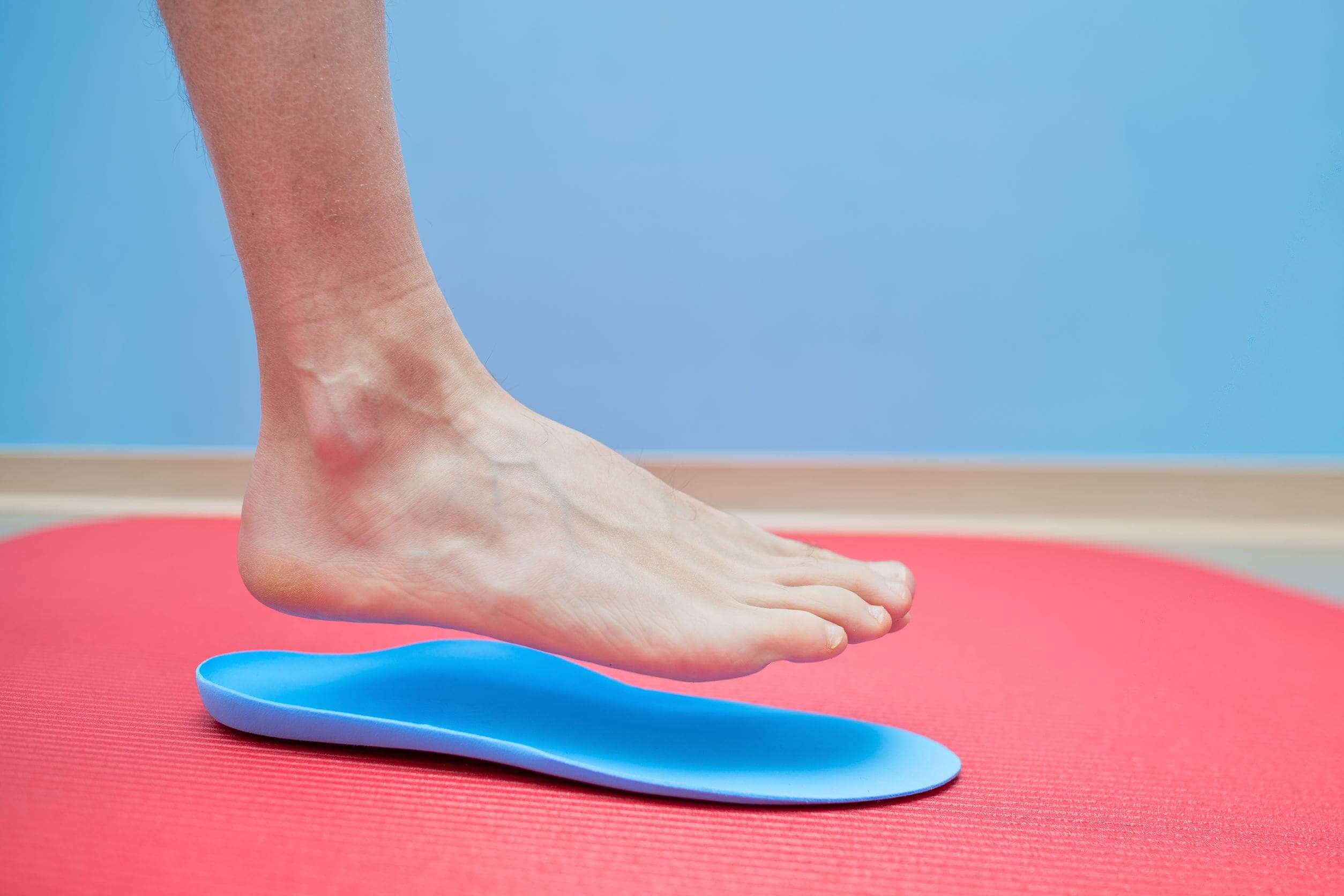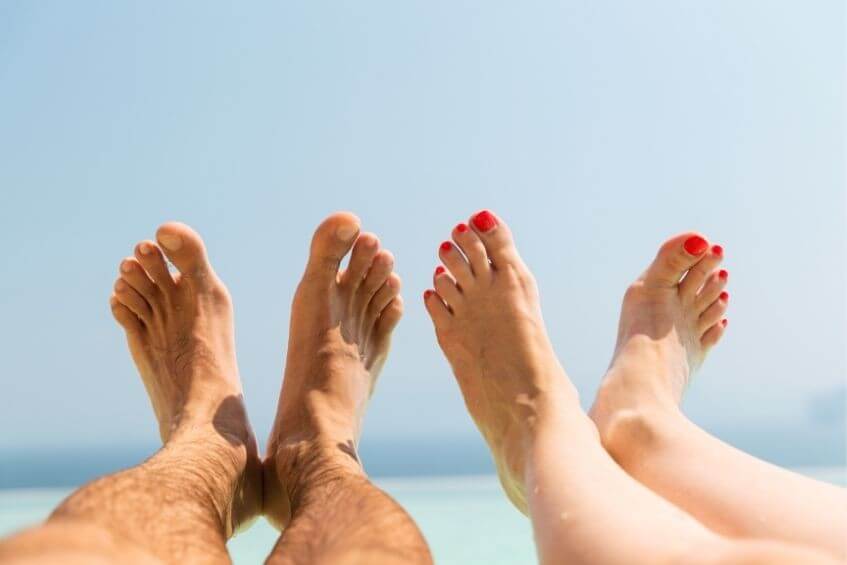
Jump to section
A bunion (medically known as Hallux Abducto Valgus) is a bony bump on the inside border of your foot that is caused by a change to the alignment of your big toe. Bunions develop when your big toe angles toward your second toe instead of pointing straight, forcing the base of the toe outwards and creating the typical ‘bump’ on the inside of the foot.
As a bunion grows worse over time, you may find that your big toe eventually loses flexibility and functionality, becoming fairly stiff and rigid. For many, their bunion also develops osteoarthritis.
Bunions are typically not painful unless tight shoes rub against them, irritating them. However, some experience inflammation, pain, and swelling at the big toe joint.
While regular bunions affect the big toe, if your bump is over by your little toe, this is called a Tailor’s bunion or bunionette.
Bunions are often genetic in nature, meaning they run in families, likely due to bone structure traits and musculoskeletal characteristics. To be more precise, it’s not the bunion itself that is inherited, but the foot characteristics that can put you at a higher risk of developing bunions.
Many are also linked to placing too much stress and pressure (overloading) the big toe joint over a long period. This results in soft tissue and bony adaptations.
Common causes of bunions include:
The physical bump on the side of your foot is the main sign to look for when working out if you have a bunion. Additional signs and symptoms may include:
You can expect similar signs and symptoms for a Tailor's bunion except that the bony lump will appear at the outside of your foot at the base of your little toe. You may experience irritation, pain, swelling and redness around the affected area, usually from wearing shoes that are too tight, causing them to rub. Corns and calluses may also develop.
Our podiatrists can diagnose a bunion
after a thorough clinical assessment of your history and symptoms. In some cases, if we need to know the severity of the bunion and whether
any osteoarthritic changes have developed, an X-ray may be required, which we can refer you for. Depending on the findings, this will help
guide the best form of treatment.
Our podiatrists recommend various treatment options that will help your bunions, depending on your situation. Usually, the primary goal of the treatment is to reduce your symptoms to enable you to return to your daily activities and reduce or cease the progression of the deformity.
There are both nonsurgical and surgical treatment options, and the action we take will depend upon your personal situation.
Surgery is the only way to "fix" the bunion. However, non-surgical conservative bunion treatment options have been proven to be successful and surgery is typically used as a last resort. Due to the prolonged recovery time of usually 8 weeks - 6 months and potential complications such as:
While not all bunions can be prevented, the following activities may help to reduce your risk.

Our feet are the foundation for the entire body, so it's important that they have enough strength to tolerate our activity levels. Use
these three exercises to help strengthen your feet.

Not everyone needs orthotics, but they can play an integral role in treating or relieving pain in several foot and lower limb conditions.

The heat and humidity of an Australian summer makes it a prime time for issues to arise, so our newest podiatrist Lucy has put together
seven helpful tips to keep your feet healthy and problem free throughout summer.
| Monday | 7:40am - 6:00pm |
| Tuesday | 7:40am - 6:00pm |
| Wednesday | 7:40am - 6:00pm |
| Thursday |
7:40am - 6:00pm |
| Friday | TEMP CLOSED |
| Saturday | CLOSED |
| Sunday | CLOSED |
Ground Floor, 344 Queen Street,
Brisbane City QLD 4000
| Monday | 7:40am - 6:00pm |
| Tuesday | 7:40am - 6:00pm |
| Wednesday | 7:40am - 6:00pm |
| Thursday |
7:40am - 6:30pm |
| Friday | 7:40am - 5:00pm |
| Saturday | 7:40am - 4:30pm |
| Sunday | CLOSED |
Newmarket Village, 114/400 Newmarket Rd, Newmarket QLD 4051